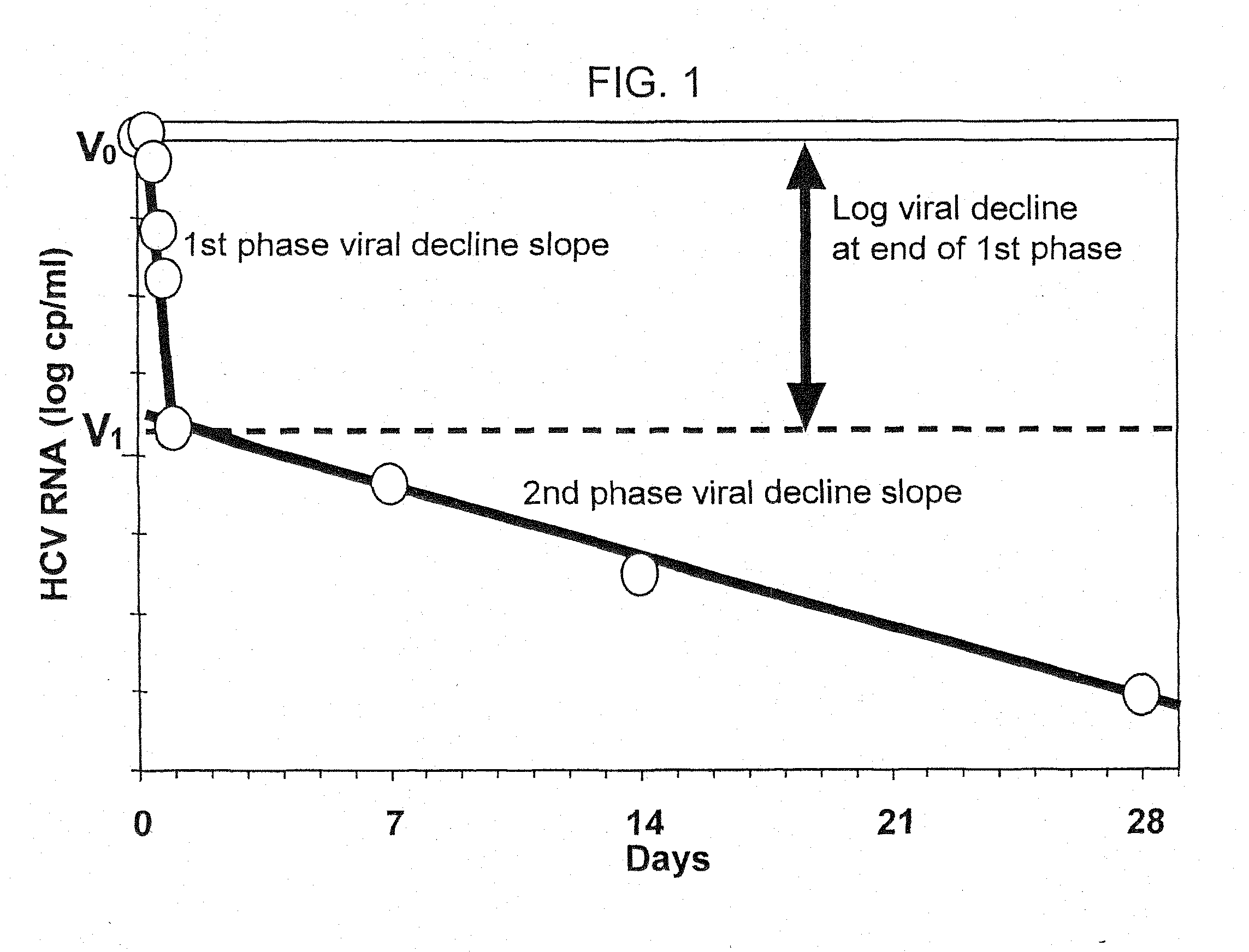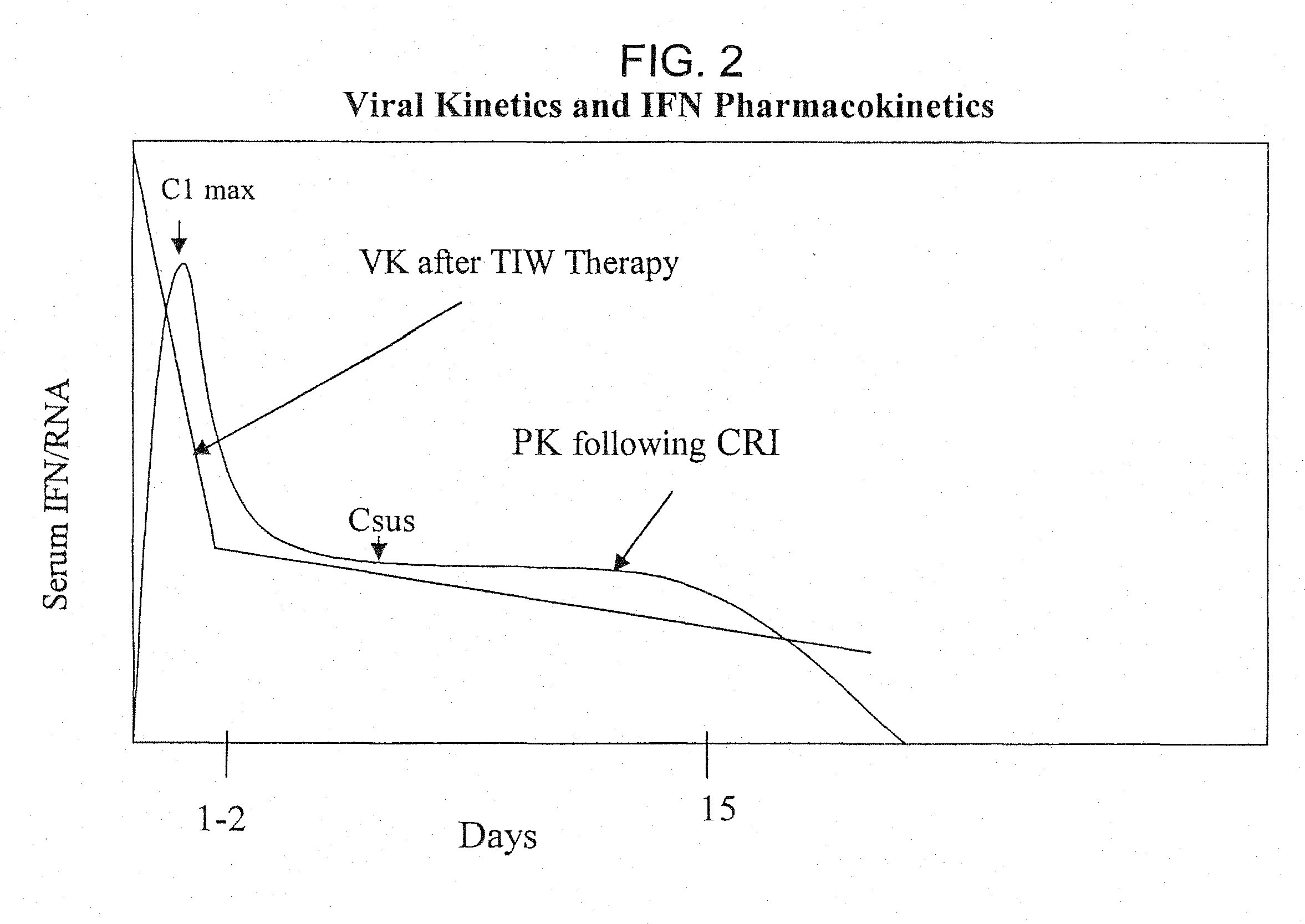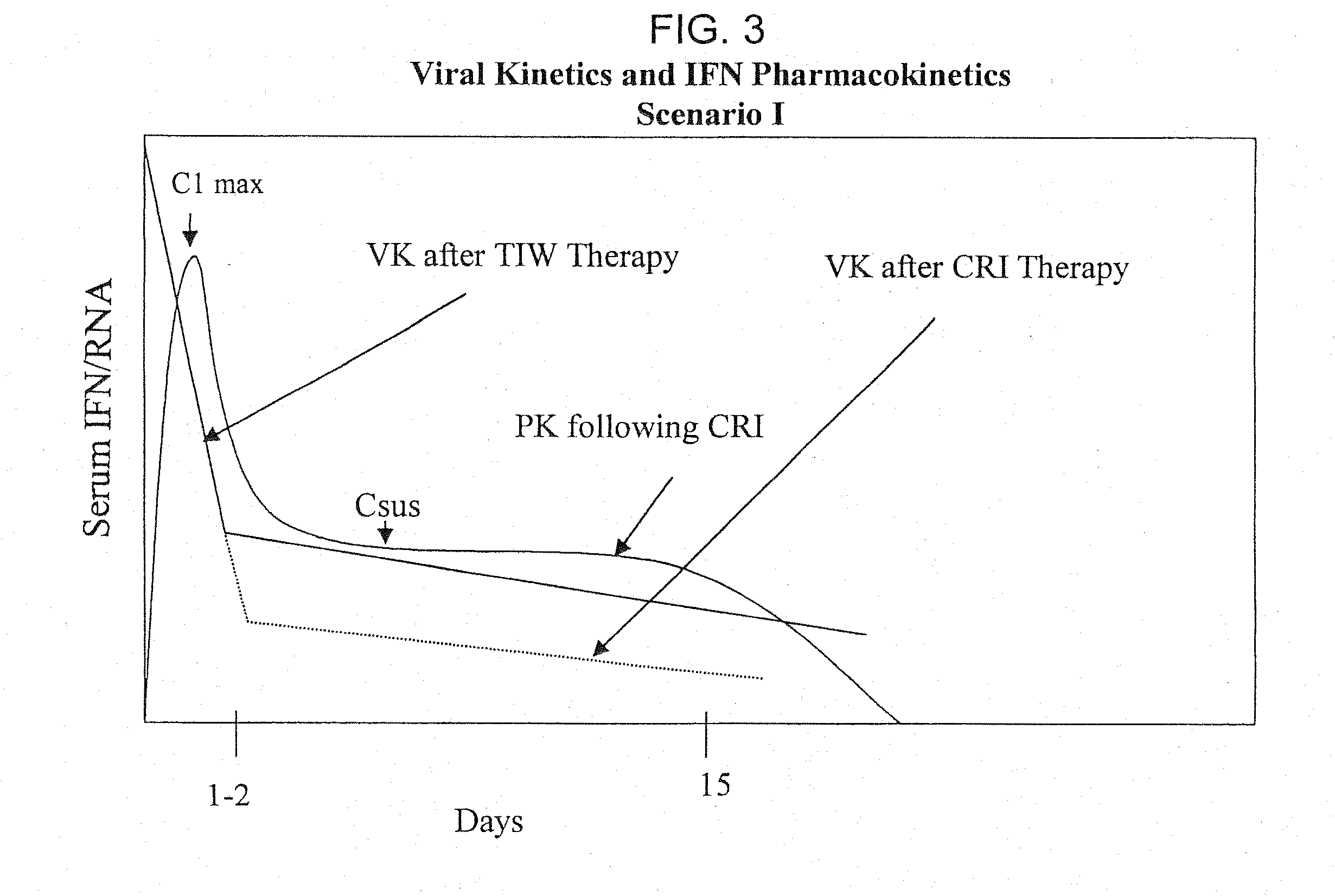Method of treating hepatitis virus infection with a multiphasic interferon delivery profile
a multi-phasic, interferon-based technology, applied in the field of hepatitis virus treatment, can solve the problems of 40% to 50% of patients who fail therapy, patients currently have no effective therapeutic alternative, non-responders or relapsers, etc., to achieve rapid drop in viral titer, sustained viral response, and decrease in viral titer
- Summary
- Abstract
- Description
- Claims
- Application Information
AI Technical Summary
Benefits of technology
Problems solved by technology
Method used
Image
Examples
example 1
[0173]An individual presenting with an HCV infection is treated with IFN-α. A typical patient presents with about 105 to 107 genome copies of HCV per milliliter serum. IFN-α is administered in a drug delivery system that includes IFN-α in at a concentration of the amounts of 63-189 μg for release over one week or 126-378 μg for release over two week time periods.
[0174]In one series of treatment regimens, IFN-α is administered using a subcutaneous pump to achieve zero order input levels at 40 μg / day infusion of the drug subcutaneously.
[0175]The concentration of IFN-α in the serum, as well as the viral titer, are measured at various time points, e.g., 0 hour, 6 hours, 12 hours, 24 hours, 48 hours, 4 days, 7 days, 15 days. The results are shown in FIG. 6. Similar measurements are continued for a period of six months every month after therapy is discontinued.
example 2
[0176]IFN-α is administered in a range of from 200 mg to 500 mg in a volume of from about 0.2 to 0.5 ml by subcutaneous injection.
[0177]Typical Drug Loadings are as follows: A Drug loading of 0.1% w / w provides for a “burst” or loading dose of 10-50%. Thus, 0.1% (0.1 g / 100 g) of a 200 mg dose is 200 μg and 5-50% of that released dose in 12-48 hours is 10 μg-100 μg (first order release), with the balance of the dose released in a zero-order fashion over the course of 10-16 days (e.g. ˜5-10 μg / day) . . . .
[0178]In another dosing regimen, the drug loading is adjusted and the “burst-controlled” to provide adjusted release profiles: Drug loadings of 0.5% (0.5 g / 100 g=0.005) of a 200 mg dose would provide for 1 mg doses and therefore release profiles of as much as 1-month with appropriate control of burst (5-20%) and daily maintenance release profiles of as much as 20 g / day as needed in a zero order fashion.
PUM
| Property | Measurement | Unit |
|---|---|---|
| diameter | aaaaa | aaaaa |
| size | aaaaa | aaaaa |
| time | aaaaa | aaaaa |
Abstract
Description
Claims
Application Information
 Login to View More
Login to View More - R&D
- Intellectual Property
- Life Sciences
- Materials
- Tech Scout
- Unparalleled Data Quality
- Higher Quality Content
- 60% Fewer Hallucinations
Browse by: Latest US Patents, China's latest patents, Technical Efficacy Thesaurus, Application Domain, Technology Topic, Popular Technical Reports.
© 2025 PatSnap. All rights reserved.Legal|Privacy policy|Modern Slavery Act Transparency Statement|Sitemap|About US| Contact US: help@patsnap.com



